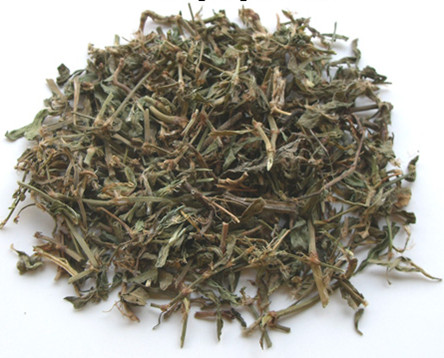Common Knotgrass Herb
The Processing of Common Knotgrass Herb
Origin
The aerial part of annual herbaceous plant Polygonum aviculare L. of family Dolygonaceae.
Location
Most areas in China.
Harvest
Collected in summer.
The true smell and taste
No smell, slightly bitter.
Best quality
Green, profuse leaves, tender, without impurity.
Processing
Sliced and unprocessed.
The Effect of Common Knotgrass Herb
Property
Bitter, slightly cold; bladder meridian entered.
Actions
Induce diuresis to treat stranguria, remove dampness.
Indications
A. Stranguria
It is good at clearing damp-heat in lower-energizer, and inducing diuresis to treat stranguria. It is usually indicated for urolithic stranguria and heat stranguria, such as with Mu Tong, Qu Mai and Che Qian Zi in Ba Zheng San from Tai Ping Hui Min He Ji J u Fang. For blood stranguria, it should be combined with blood-heat-clearing and bleeding-stopping herbs, such as Da Ji, Xiao Ji and Bai Mao Gen.
B. Eczema and vulvae pruritus, damp-heat jaundice
It has the action of removing damp-heat to relieve itching and is indicated for vulva pruritus and eczema, damp-sore due to damp-heat accumulation in lower-energizer. It could be used singly or decocted with Di Fu Zi, She Chuang Zi and Jing Jie, etc., for external washing. It is also indicated for jaundice of damp-heat type with its action of clearing damp-heat. It should be combined with the dampness-drying and jaundice-treating herbs such as Yin Chen Hao and Zhi Zi, etc.
Dosage and Administrations
Decoct 9~15g. Double the dosage when use the raw one. Proper dosage is for external application.

